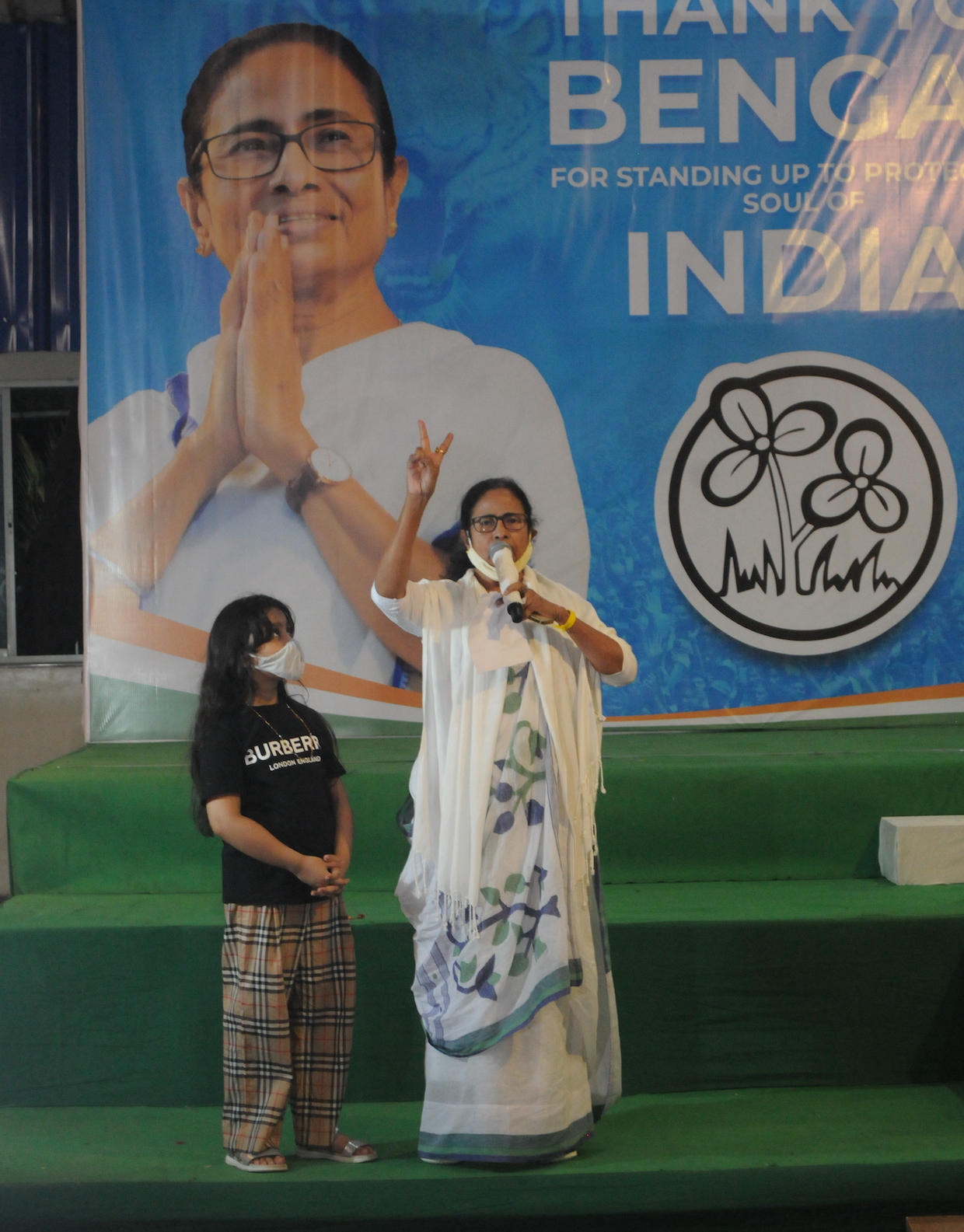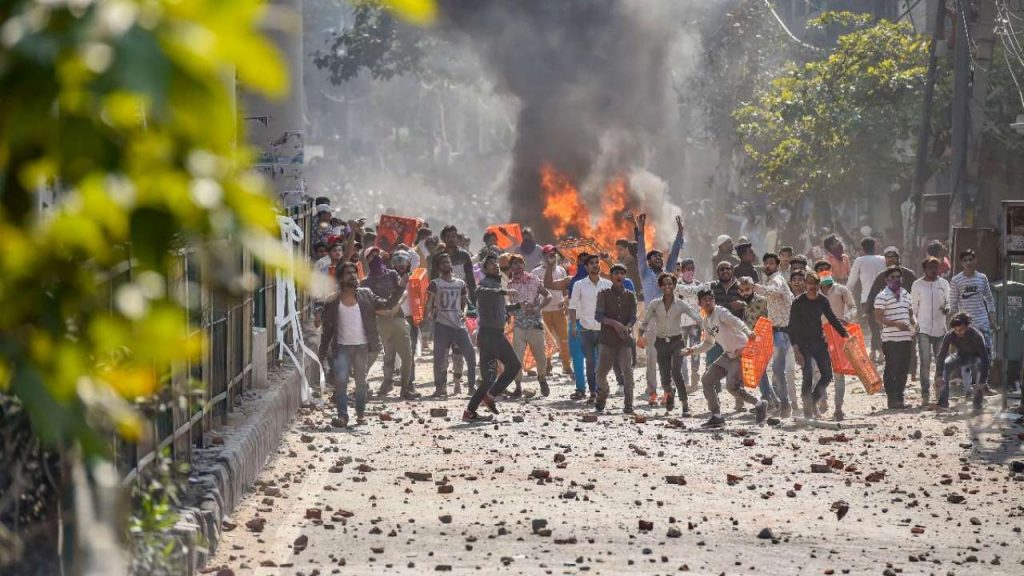
No exceptions in the routines of political violence
No political party can honestly claim to be restrained and abjuring violence against rivals, though they regularly do so. Police and governments, across India, from Haryana to Tripura, use violence to intimidate and coerce or fail to contain violence, by distancing themselves from the perpetrators and becoming onlookers and therefore complicit in the use of violence by rival political parties

There is moral high ground in politics. There are no exceptions. Regardless of noisy protestations of innocence and victimhood, almost every political party in India has a history of performance of “extralegal, excessive and exceptional” violence.
Such violence is invariably interpreted to conform to a specific narrative of a specific location and these interpretations can span a range of justifications – vengeance, retribution, sacrifice and of course victimisation. Having completely routinised political violence as the visible manifestation of deep emotion, it delivers a powerful and easily intelligible message to a diversity of publics, be they located in the far Northeastern corner, in the border state of Tripura or in West Bengal.

No political party can honestly claim to be restrained and abjuring violence against rivals, though they regularly do so. Police and governments, across India, from Haryana to Tripura, use violence to intimidate and coerce or fail to contain violence, by distancing themselves from the perpetrators and becoming onlookers and therefore complicit in the use of violence by rival political parties.
The Bharatiya Janata Party’s claim to victimhood and its choice of candidate, lawyer Priyanka Tibrewal, for the high octane by-poll in Bhabanipur in Kolkata against chief minister Mamata Banerjee is a decision designed to focus attention on the government’s tacit encouragement to the Trinamool Congress and its propensity to use political violence to coerce opposition activists either into becoming inactive or switching allegiance and buying peace.
As the lawyer who successfully represented victims of Trinamool Congress postpoll violence in West Bengal and the handing over of the investigation, in a limited number of cases of killings, rape, injuries and dislocation to the Central Bureau of Investigation, Tibrewal’s campaign is geared to inflicting the maximum damage possible to Mamata Banerjee’s image as a responsible politician and credible leader. The campaign’s purpose is to undermine Mamata Banerjee by pinning her down as the sponsor at one remove to the poll related violence, described by West Bengal Governor J P Dhankar as a breakdown of constitutional order that has plunged the state into a spiral of murderous confrontations that the state government failed to stop.
Also read: Bengal CPI-M’s move to hoist Tricolour shows a bankruptcy of ideas
The claim to the narrative of victimisation is, however, not a BJP exclusive. In Tripura, the BJP has been accused by the Communist Party of India Marxist of the September 8 violence in which the party’s state headquarters, divisional offices, the trade union office, media houses, vehicles and cadres were attacked, while the police stood by and failed to intervene. Similar charges have been made by the Trinamool Congress against the BJP in Tripura, after Abhishek Banerjee’s convoy was allegedly attacked and other visiting Trinamool Congress leaders from West Bengal were also exposed to alleged BJP violence to discourage them.
By including the entire opposition to the BJP in Tripura in his question, “Why is the BJP terrified of the opposition?,” CPI M general secretary Sitaram Yechury, has accommodated the violence against the Trinamool Congress in his reaction to the events of September 8. While this has triggered speculation about the CPI-M’s strategy in Tripura which goes to the polls in 2022, what is significant is that the BJP, in the border state , is being charged for exactly the same crimes of commission and omission as it has brought against the Trinamool Congress now and the CPI M in the past in West Bengal.
The use of violence by political parties and the failure of the state government and its police to prevent it from happening or turning deliberately inactive when an incident is occurring is typical of the routines that have been adopted by the ruling class to normalise violence. Thomas Blom, a distinguished scholar of Indian politics noted that the purpose of the violence has often been to make a point so that the public registered the occurrence. He argues that fury and anger have developed into a public virtue and “an increasingly legitimate style of politics.”
Reaction to the violence and its approval and sanction by political parties has been emptied of moral restraint. The language of political campaign has ensured this. The threat of violence implicit in the hostility between rival political parties in West Bengal has built up an intensely competitive and dangerously high pressure politics where one or many incidents of violence, vandalism, arson are perceived as pivotal to establishing dominance over a particular space.
The patterns are familiar. Leaders of a political party declare that their supporters are in danger as a clash or an assault has been launched by a rival political party. In Tripura, news reports underscore this formula of accusation and counter accusation that then converts itself into violence. Several news reports point to the CPI M accusing BJP’s state minister Sushanta Chowdhury and union minister Pratima Bhowmik of threatening violence by claiming that the BJP has been attacked. The BJP in turn has accused the CPI M of initiating violence against its activists. In West Bengal, an almost identical pattern of mounting anger breaking out in small acts of violence that then escalate into larger incidents of murderous violence has played out over the years.
Also read: Challenge of anchoring a coalition in a multi-party federal polity
The BJP’s claims that 37 of its workers have been killed in poll related violence in 2021 is countered by the Trinamool Congress; on July 21, Martyrs’ Day, Mamata Banerjee said that 38 party workers had been killed in post poll violence. The competitive nature of the claims has added to the existing pile of perceptions contributing to the volatility of politics and its spill over into violence.
Provocation by politically opposed forces is only one of the sources of violence; opposition to the ruling establishment that then deploys the coercive arm of the State, namely the police, to physically assault protestors or demonstrators has also been normalised, converting protest into a challenge to authority that then responds with violence to contain it. The Haryana instance, where the sub divisional magistrate Ayush Sinha’s instructions captured on video reveal the approval and sanction of extralegal, excessive force to tackle a political problem, underscores the growing use of violence in politics today.


